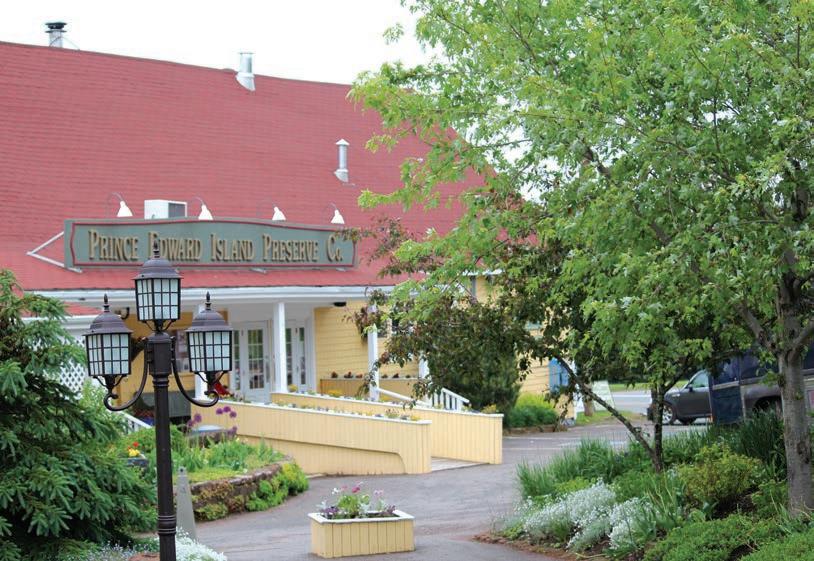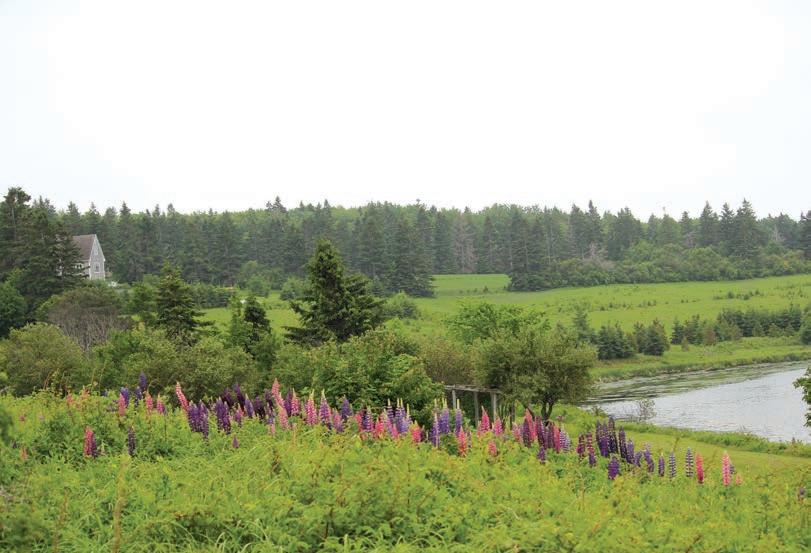
5 minute read
Prince of Tides

Prince Tides Of
Can you name Canada’s smallest province?
Here’s a clue: It’s located in the country’s Atlantic region, a Maritime Province of just over 2,000 square miles tucked among its much larger counterparts.
Th e answer: Prince Edward Island, home to about 150,000 people and better known to Canadians quite simply as PEI. Prince Edward Island: ‘Quiet shores—beaches that roar’ By George Medovoy
Th ough it is dwarfed in size by the other provinces, PEI holds the distinction of having been at the center of Canada’s birth as a nation. In 1864 the leaders of PEI met with their peers from New Brunswick, Nova Scotia, Ontario and Quebec in Charlottetown, PEI’s charming capital, to map out the idea of Canadian nationhood. Today, Canada has grown in size to 10 provinces, stretching over 3,000 miles from coast to coast . . . and the crescent-shaped strip of land nestled into the elbow where New Brunswick and Nova Scotia meet is where it all began. No wonder it is oft en called the “Cradle of the Confederation.” (Th is despite the fact that PEI itself would not actually join until 1873, becoming Canada’s seventh province.)
Our trip to PEI was part of a wider voyage, including a fl ight from California to Montreal and from there an overnight trip to Halifax, Nova Scotia, on board VIA Rail’s comfy Sleeper service. We took the Northumberland Ferry for the hour-and20-minute cruise from Pictou, Nova Scotia, to Wood Islands, PEI, our rental car along for the ride.
From the ferry terminal we headed along Route 2 toward PEI National Park, passing through gently rolling hills and dramatic sea vistas until we reached the village of St. Peter’s Bay. Practically every turn on the road was worth a photo stop, for as one American ex-pat told me, “You go to places you’ve never seen before, and you sort of wonder why you didn’t know about them.” In the picturesque village of St. Peter’s Bay we broke for lunch. Th e quaint roadside diner Rick’s Fish ’n’ Chips is a popular stop



for travelers and locals alike—particularly aft er it was featured on Food Network’s “You Gotta Eat Here” in 2012. In addition to its famous fi sh and chips, the eatery specializes in curried seafood chowder, marinated mussels and Cajun mussels. We didn’t meet Rick on this trip, but we did catch his amusing note on a bulletin board: “Don’t forget to say hello to Rick. He’s the guy with the mustache.”
Our next destination was Greenwich, where a beach of beautiful white sand, red sandstone cliff s and majestic waves make it one of the most recognizable destinations in all of Canada. Near the shoreline a wooden walkway winds its way through lovely lupines in the tall grass. Showing off their brilliant purples, pinks and whites, the lupines are a familiar sight throughout the island.
Toward the end of the day, we headed to PEI’s southern shore for the Rodd Charlottetown Hotel, located in the center of the lovely capital.
There’s a lot of emphasis on history in Charlottetown, given the city’s role in the Canadian Confederation, so the following morning we joined a young woman dressed in 19th-century costume for a walk to Province House, a national historic building where delegates met for confederation talks. Aft er learning about Canada’s formative years, we took a leisurely stroll along Queen Street and detoured down Victoria Row, a pedestrian mall fi lled with boutiques and cafes.
Th e nearby Confederation Centre for the Arts, a memorial to Canada’s founding fathers, takes up a full city block and off ers music, theater and dance performances as well as art exhibits—all a sign of the island’s busy “artsy” side. Th e nearby Sims Corner



Steakhouse and Oyster Bar, housed in an old heritage building at 86 Queen Street, was the perfect place for our dinner, featuring a local specialty, Prince Edward Island halibut, crusted with herbs and served with a chipotle cream.
Our final day on the island took us to Cavendish and the northern coast, the home of Green Gables Heritage Place, the real 19th-century farm that inspired Lucy Maud Montgomery’s famous novel “Anne of Green Gables.” I took a wrong turn on the way and ended up on a country road not knowing which way to go. Luckily, we found a farmhouse and drove up a dirt road to the front door. Th at’s where we were greeted by a barking dog and a fellow who met us on the front porch. “I’m lost,” I blurted out, but the man quickly reassured me, “You’re never lost,” and gave us perfect directions.
Green Gables is like stepping back in time, and if you’re familiar with Anne Shirley, the plucky heroine in the straw hat, you’ll love walking through the charming green-andwhite farmhouse that served as the character’s home. Readers throughout the world have been captivated by Montgomery’s wonderful story, and the farmhouse setting remains one of PEI’s most beloved attractions.
On the way back to Charlottetown, we stopped at the Prince Edward Island Preserve Company next to a sleepy meadow on the River Clyde in New Glasgow. If you like preserves, this place is heavenly, with sample aft er sample to taste: blackcurrant rhubarb, raspberry with champagne, and wild blueberry and lemon.
We followed up the tasting with a leisurely lunch of pan-fried maritime fi sh cakes at a table with an unobstructed view of the meadow and the river—enough for a lasting memory of Prince Edward Island’s idyllic world. the home of Green Gables Heritage Place, the real 19th-century farm that inspired Lucy Maud Montgomery’s famous novel “Anne of Green Gables.” I took a wrong turn on the way and ended up on a country road not knowing which way to go. Luckily, we found a farmhouse and drove up a dirt road to Rick’s Fish ’n’ Chips ricksfi shnchips.com Green Gables Heritage Place pc.gc.ca/eng/lhn-nhs/pe/greengables/index.aspx Prince Edward Island Preserve Co. preservecompany.com For more information about Prince Edward Island, visit tourismpei.com










